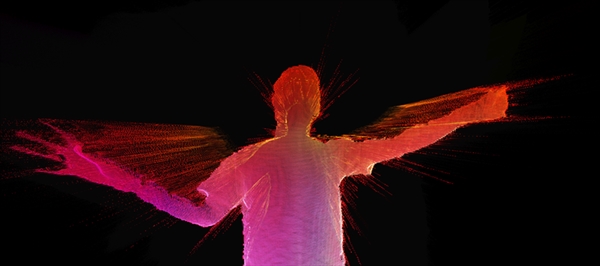
Pictured: Screen grab from "ParticleApp" Microsoft has some really amazing technology. Between the Kinect , DirectX , and the Surface , they've got a serious arsenal of performance interactive. However, it's somewhat rare to see creative coders dive into these technologies. There's the Kinect, of course, but it's arguably used with Freenect in this scene more often than Microsoft's official SDK. This may be due in large part to the lack of open-source software coming from MS and the relative complexity of their APIs which often go over the heads of self-taught artists-turned-coders. But this is changing. Today at Visual Studio Evolution 2013 in Dusseldorf, Germany, Ben Lower from Kinect for Windows announced and demoed the Kinect Common Bridge . The KCB is an open source project released by MS Open Tech . It's a rock solid high-level interface to their SDK. Pictured: The "UserApp" sample demonstrates how to track skeletons and faces with minimal code With support from my awesome employer, Wieden+Kennedy , I worked with Microsoft to implement the KCB in Cinder . The end result is a new Cinder block with a few samples demonstrating how easy it is to run the Kinect. This will eventually replace the Cinder-MsKinect block. CINDER-KCB ON GITHUB The new library has some great improvements in performance and stability over the old one. It handles frame synchronization which is required to run the all-important face tracking SDK. You also get direct access to the IR stream. Cinder-KCB picks up features from the old library's dev branch. There is no need to call an update() method, and all data comes through a new "Frame" object. The block introduces a series of free functions for processing frame data, such as coordinate mapping, counting users, and depth channel image analysis. For example, rather than have the Device class do things like handle user isolation in the depth image, you get a function which takes the raw channel and an "options" object to process the image on demand. That means enormous frame rate and CPU-cycle savings when you don't need those extra features. Microsoft also worked with Joshua Noble and James George on an openFrameworks add-on . You can find that one here . For more information on and video demonstrations of the Kinect Common Bridge, check out the official blog post here .

